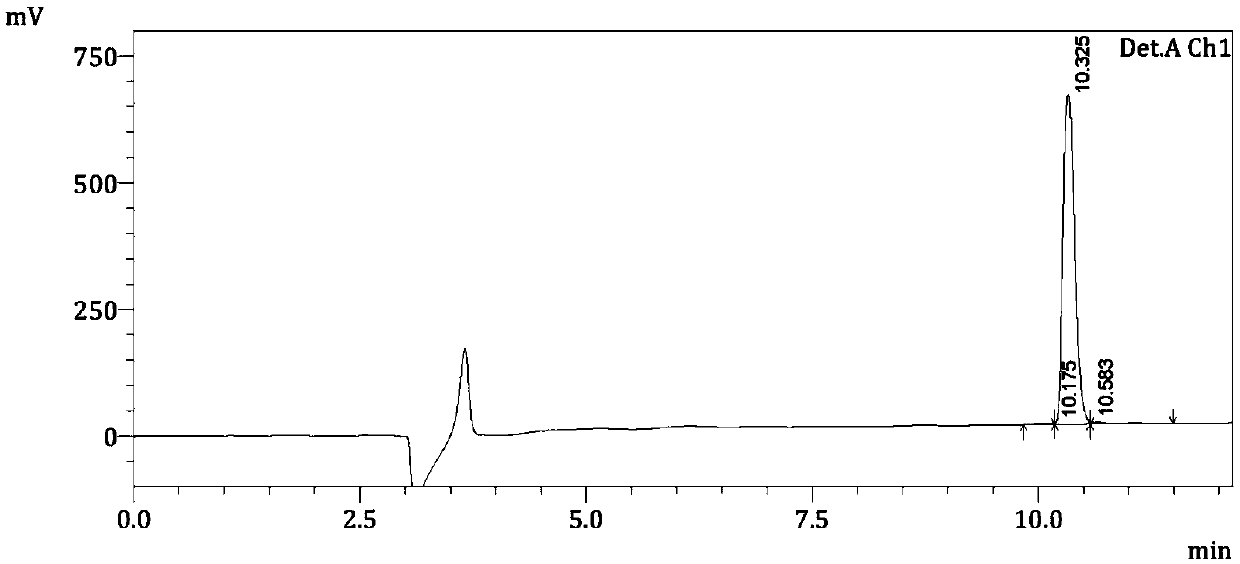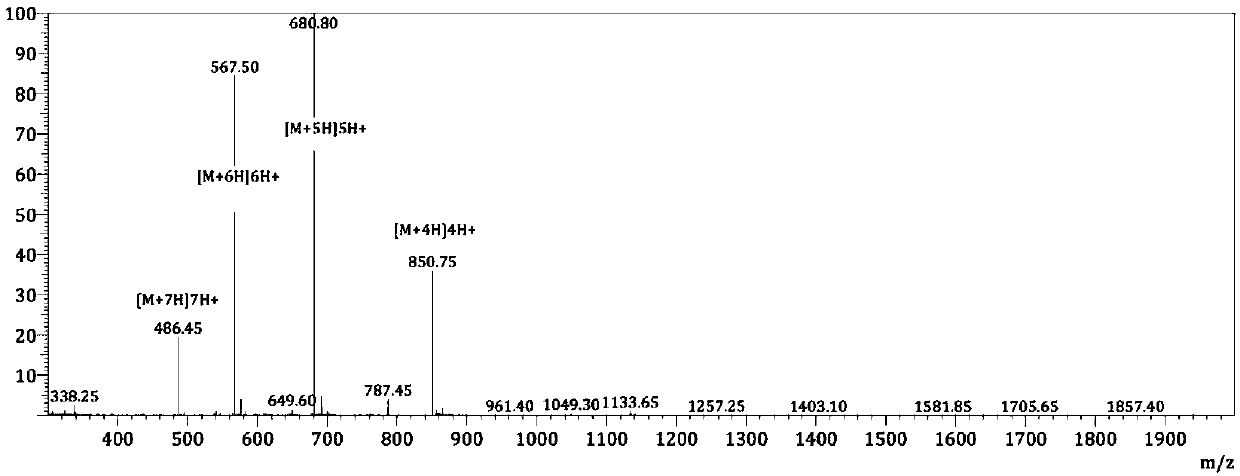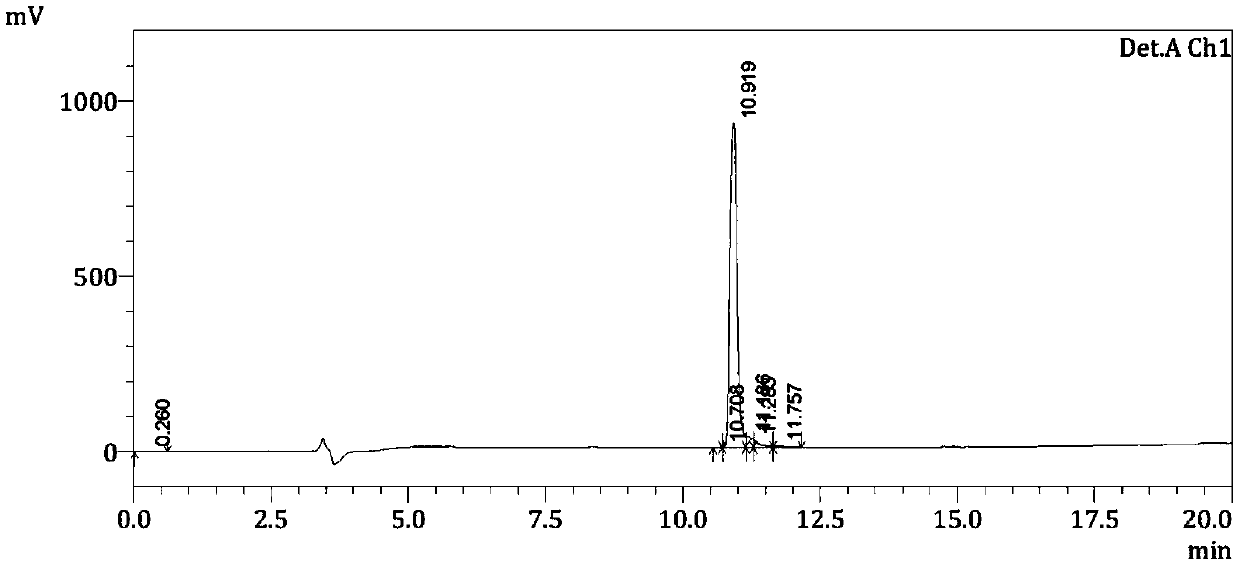Antibacterial peptides and application thereof
An antibacterial peptide, a technology of any proportion, applied to the antibacterial peptide and its application field, can solve the problems of complex structure and high human cytotoxicity, and achieve the effects of low hemolytic activity, broad-spectrum antibacterial activity, and high antibacterial activity
- Summary
- Abstract
- Description
- Claims
- Application Information
AI Technical Summary
Problems solved by technology
Method used
Image
Examples
Embodiment 1
[0045] The preparation of embodiment 1 antimicrobial peptide
[0046] A polypeptide FC8 with antibacterial activity was designed by bioinformatics, and FC8 was modified from the number of charges and the overall hydrophobicity, and FC8-Q10K, FC8-Q7K / Q10K and FC8-Q7K / Q10K / Q21K, FC8-A12L, FC8-A5L / A12L, and FC8-A5L / A12L / A16L.
[0047] The above polypeptides were synthesized by solid phase synthesis.
[0048] After activation and deprotection of MBHA resin, according to the standard solid-phase peptide synthesis procedure, Fmoc-amino acid is used as raw material to synthesize sequentially from the C-terminus to the N-terminus of the polypeptide sequence. After the last amino acid has been added, acetylation is performed using acetic anhydride and the peptide is sheared and lyophilized. Use double-distilled water (phase A) containing 0.1% TFA and acetonitrile (phase B) containing 0.1% TFA as the mobile phase, adopt AB phase gradient mixing, and use a SHIMADZUInertsil ODS-SP chrom...
Embodiment 2
[0049] Embodiment 2 Antimicrobial Peptide In Vitro Bacteriostatic Activity Hemolytic Activity Determination
[0050] Bacteria were cultured overnight at 37°C in a 96-well plate with Mueller Hinton medium, and the final concentration of bacteria in each well was 5×10 5 CFU / ml. After the polypeptide was added, it was cultured at 37°C for 24 hours, and then the minimum inhibitory concentration (MIC) was determined by the microdilution method. MIC was defined as the lowest concentration of the polypeptide that killed all bacteria. The results showed that the antimicrobial peptides are effective against Gram-negative bacteria such as Escherichia coli, Pseudomonas aeruginosa, Klebsiella pneumoniae, Gram-positive bacteria such as Staphylococcus epidermidis, Staphylococcus aureus, Enterococcus faecalis, vine Both Micrococcus flavum and Bacillus subtilis had good antibacterial activity. The specific results are shown in Table 2 and Table 3 below.
[0051] The hemolytic activity of t...
PUM
 Login to View More
Login to View More Abstract
Description
Claims
Application Information
 Login to View More
Login to View More - R&D
- Intellectual Property
- Life Sciences
- Materials
- Tech Scout
- Unparalleled Data Quality
- Higher Quality Content
- 60% Fewer Hallucinations
Browse by: Latest US Patents, China's latest patents, Technical Efficacy Thesaurus, Application Domain, Technology Topic, Popular Technical Reports.
© 2025 PatSnap. All rights reserved.Legal|Privacy policy|Modern Slavery Act Transparency Statement|Sitemap|About US| Contact US: help@patsnap.com



